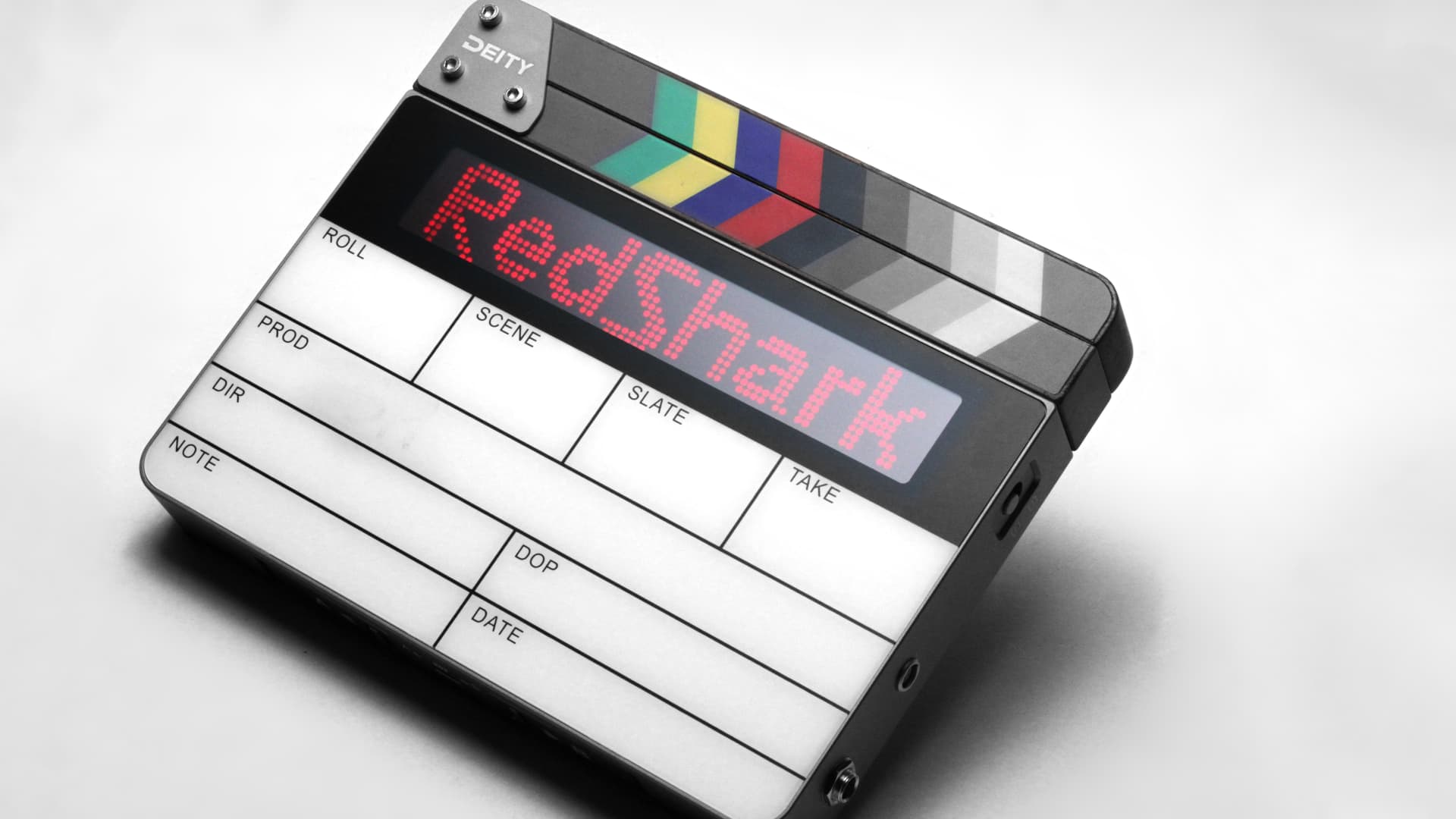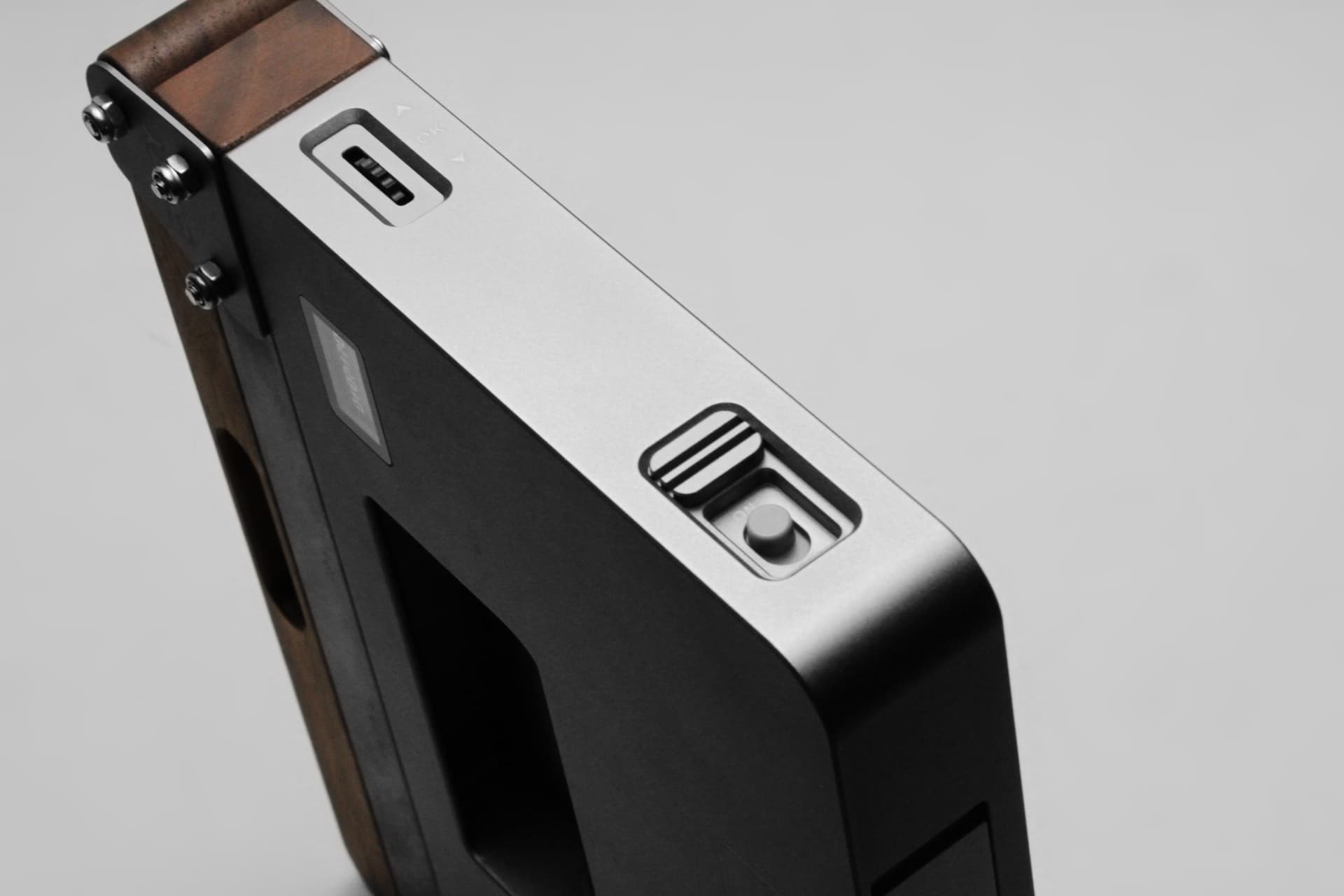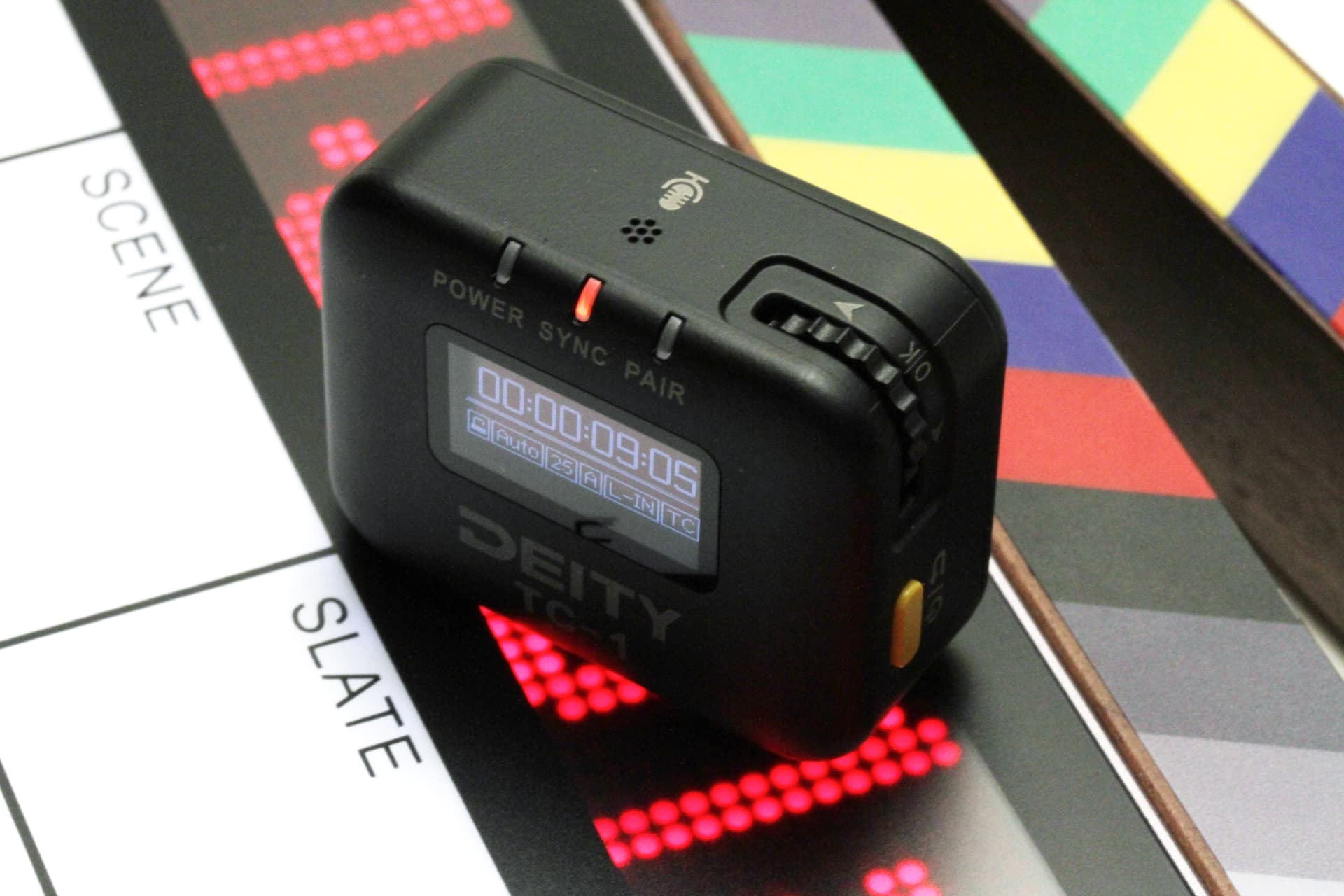
You can buy a basic clapperboard slate for £50. Phil Rhodes on why it can be worth spending 20x more to get a timecode-enabled one.
A modern timecode slate, as apart from the unconvincing souvenirs sold on Hollywood Boulevard, is a tool for such a rare task that the market is really quite narrow. Nevertheless, enthusiastic audio disruptor Deity has recently joined that field with its TC-SL1, a full-featured timecode slate matched with the diminutive TC-1, which the company calls, with commendable frankness, a timecode box, which is certainly what everyone else will call it.
The slate has a dot-matrix display and can therefore show a full alphanumeric character set. The chassis, which the company likes to highlight is milled from a single billet, is attractive and solid. The two hardwood sticks create a nice sharp snap. There is a 5-pin Lemo-compatible input-output, and quarter-inch TRS for output only. For some reason, the Lemo-compatible cable is supplied to US customers and the TRS to everyone else, which is a bit of a wind-up as that means no timecode input for most of us without buying a moderately expensive Lemo cable. A tiny rear OLED provides a confidence repeat of the timecode, as well as menu access via a rolling wheel on the side.
Physical features

The power switch is guarded; the menu wheel is at the top
Power control is under a sliding cover and inversion for tail slates is a manual switch. That’s automated on some designs, although the tilt switch can sometimes cause things to go haywire at unexpected moments, and manual is perfectly fine. The best physical feature is probably the grip at the back and the thumb slot on the upper stick, which makes one-handed operation trivial without requiring the user to get velcro skin grafts.
Two supplied NP-F550 batteries go in the bottom, with LEDs to indicate which is healthiest and avoid horrible mistakes when hot-swapping power. Given another networked timecode device, that mistake is quickly resolved, assuming bluetooth pairing. Between the batteries is a USB-C connector for recharging. No charger is included, though a lot of fast-charging protocols are supported and many phone chargers seem to work. Incidentally, if either of the batteries is missing, the ejection spring tends to make the whole chassis reverberate slightly when the sticks close, turning the slate into a certain kind of machine, so put both batteries in. Picky? Yes, but it’s a clapperboard, and the clue’s in the name.
Behind the dry-wipe face is an LED backlight (which looks less like a Star Trek hand prop than electroluminescent panel, but is brighter). The permanent legend on the dry-wipe surface seems to be printed onto the plastic which is perhaps less hardwearing than an engraved legend and it’s not clear if it’s possible to replace the surface entirely.
Bluetooth? Sweet…

TC-1 timecode box. The user interface is extremely similar to the slate; it’s the slate without the display, in essence
So far, so good; it’s a solid build with the usual features. The star feature, meanwhile, is probably the Bluetooth suite, which can set up and synchronise several timecode devices (the company supplied one slate and one box). There’s access to all of the parameters in a rather easier interface than the tiny OLED. It can configure the data shown after the sticks close. As supplied, it shows frame rate, which is an odd default, but it’s the work of seconds to change it to show user bits. User-defined text and all the other usual information can also be displayed for specified periods.
Doing this with Bluetooth is new; other devices use proprietary protocols, which may be longer ranged but don’t give us as much sophistication. In practice, Deity’s implementation is about as reliable as Bluetooth ever is, which does mean pairing devices, a matter of going over to camera and finding the right menu option on the timecode box. Such is the trade-off for the convenience of a nice cellphone UI.
Display parameters can largely be set from the menu on the slate, so there’s no absolute requirement to use the cellphone – except for user bits. Various people put various things in the user bits, but having something unique to the day helps a multi-reel project conform properly, and it seems there’s no way to set that on the slate. It could be implemented using the same menu mechanism used for the start time. Similarly, there’s no obvious way to change the display or backlight brightness from the app, as someone might prefer to when looking at a monitor. This particular feature is reportedly in upcoming firmware.
If there’s anything missing, it’s a music video workflow, where a playback device streams timecode continuously to the slate, presumably using the TC-1 box as a transmitter. This is currently not supported and there’s no word on whether the hardware could do it, but the company reports having received more than one request for the feature.
Cost comparison
The slate alone sells for a hair over £1000 including tax, which feels somewhat expensive for something that doesn’t really involve any alien technology, but timecode slates are in a small market so they always seem spendy. Deity is still undercutting the competition: Pinknoise prices Denecke’s TS-3 at £1660, a design dateing from no later than 2012 with only basic timecode features, and no radio. Ambient’s ACN system provides radio-linked timecode and the ACN-LS2 slate is more moderately priced at £1200, though that’s still almost 20% more than Deity and lacks alphanumeric display. Perhaps the closest competitor is Betso’s WTCS-1, £1100, which talks to the MovieSlate app. There have been kickstarted timecode slates for less, but availability is patchy. Similarly, Deity’s timecode box sells for £199, which is comparable to something like Tentacle, though there are packages of one TC-SL1 and three TC-1s for £1400, which is a good deal.
Generally, Deity’s entry into timecode is a competent system with a competitive feature set at an okay, if not spectacular, price. It’s always possible to speculate about longevity, and the lack of screw heads looks nice but provokes concerns about gaining access to make repairs. Slates get handled, and things that are handled get dropped and need fixing, though the solid metal chassis creates a feeling of solidity. It’d be nice if the price for the standalone slate was a little lower, if only to encourage more people to use something that they really should be using, but that might happen in time, and in the meantime there’s more choice, and more choice is good.
Tags: Production


Comments